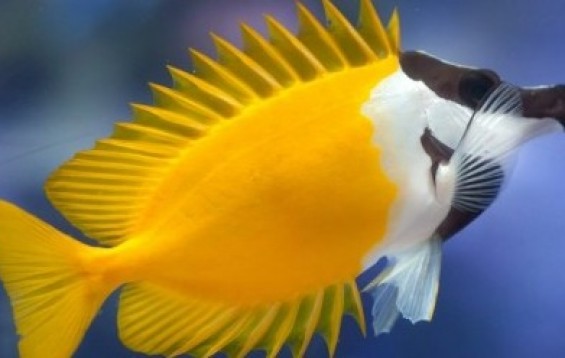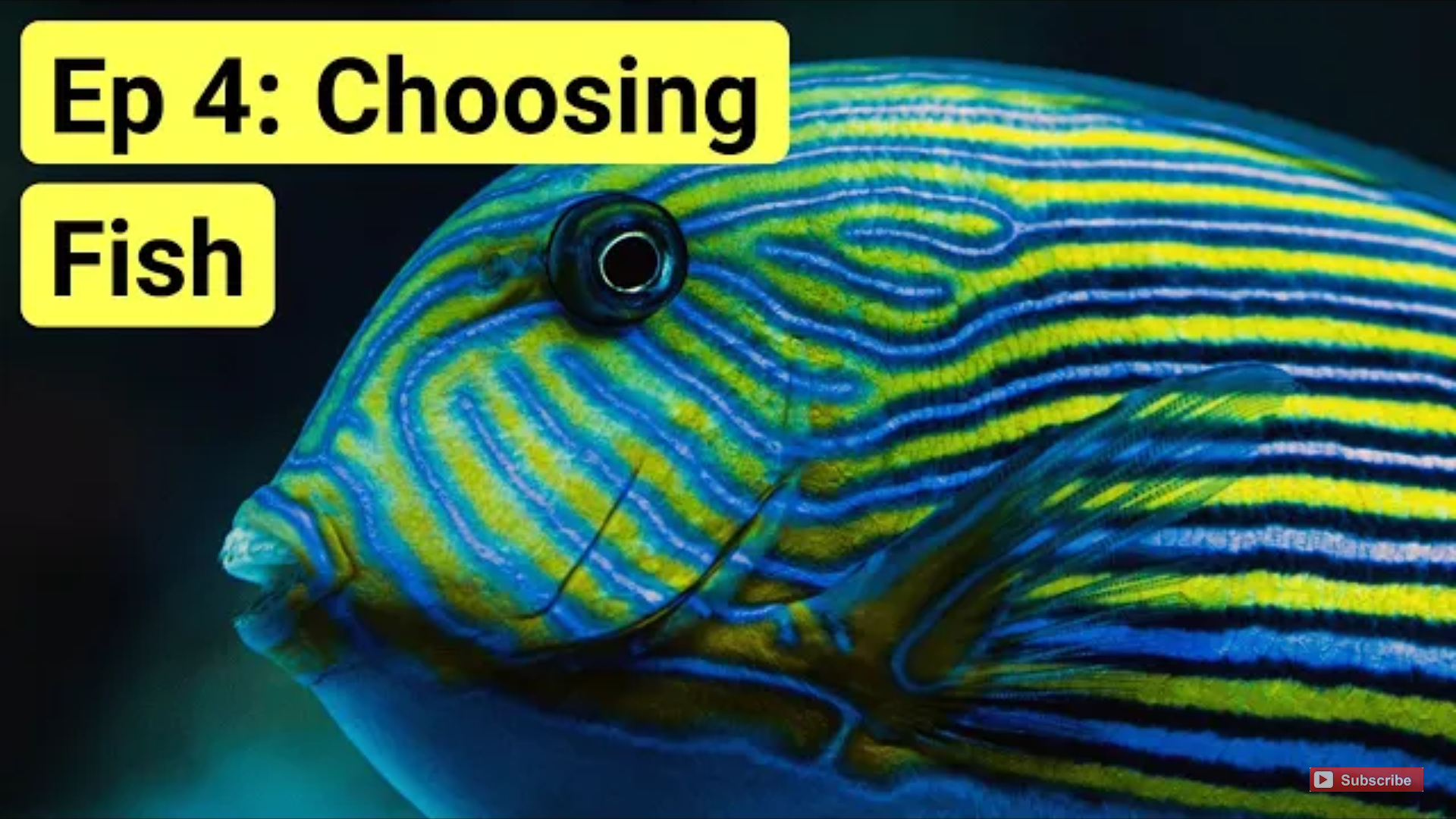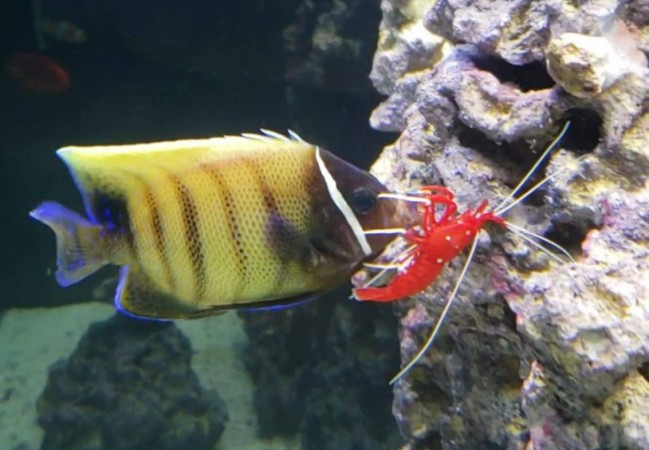- Name:
Foxface Lo
(View AKA's) - Family: Siganidae
- Species: Rabbitfish
- Scientific Name: Siganus vulpinus


General info about Foxface Lo
The Foxface Lo has a unique body color. It has a mottled yellow-brown body with a dark chest. The face is very light in color and speckled on the lower half. They are a very hardy fish and are great additions to the newly-established tank. It may reside in a large aquarium and typically reaches 7” to 9” total length. It is a very peaceful species except when housed with other rabbitfish. The Foxface Lo may be housed with more aggressive fish. Its predators will tend to leave it alone because of its venomous dorsal spines.
Easily recognized by its distinctive shape and coloration, it has an elongated snout (typical of the rabbitfish family) and a striking bright yellow body. Its head is white, with a large black triangle on its breast, a diagonal black ocular band from the first dorsal fin spine to the chin, and a narrow white blaze down the front of its snout. These unique head markings give rise to one of the Foxface’s common names: badger fish.
They retain this bright coloring throughout the day and during the night (or when stressed), have the ability to change into a mottled dark brown/gray/white pattern. Besides changing color, they are often found stationary in strange places, such as tank corners, perched in coral, vertical along a coral or rock, or even molded or curved to match the contour of a rock. This dramatic change is undoubtedly used as camouflage against predators, and upon waking, or when no longer stressed, their bright colors quickly return. Foxface's are so adept at this camouflage, that they can easily be missed by the aquarist and yet be in plain view.
Although Foxface's are compatible with most other fish, regardless of size, it can get stressed out by any fish that habitually bullies it. Tangs of the genus Zebrasoma will sometimes bully the Foxface, Tangs will see a Foxface as a direct food competitor. If you plan to keep a Foxface with Tangs it is suggested that you add the Foxface first to your aquarium.
Although they typically travel in pairs in the ocean, only one specimen should be kept per aquarium unless the tank is quite large.
Foxface Lo Diet & Nutrition
An omnivore by nature, you may find it difficult to discover what a Foxface won't eat. They have voracious appetites and aggressive eaters when it come to feeding time. The Foxface Lo will accept a wide range of meaty seafood and just about every plant it can find. Besides grazing on algae, the Foxface enjoys a variety for its diet which includes the occasional nori (dried seaweed), frozen spirulina and even blanched green veggies to its diet.
The Foxface should be considered “semi-reef safe”, it has been reported from time to time to nip at corals (they seem to have an eye for zooanthids and button polyps) when hungry. However, if well-fed Foxface typically won’t mess with your corals.
Specimens that appear pinched behind the head in the dorsal area are malnourished.
Common Diseases with Foxface Lo
The Foxface sometimes tends to get a few scrapes, which heal within a day or two, although they should be watched for signs of secondary bacterial infection. It should also be noted that the Foxface will occasionally shed its slime coat which is one of the reasons why it's so disease resistance.
Foxface Lo Origin
denizen of the Indo-Pacific shallow reefs and lagoons
Caution with Foxface Lo
Rabbitfish are generally reef-safe if they are well fed. If not, it is possible for them to nip at and consume some species of LPS and soft corals.
Acclimating Foxface Lo
Upon initial acclimation, Foxfaces tend to be rather timid, often spending the first week or two in hiding. They will gradually venture out more freely but may be easily startled back into hiding when you walk up to or past the tank. This may last up to a few months, however, if provided with plenty of rockwork, the fish will acclimate more quickly. Once acclimated, the Foxface will spend the majority of the day swimming in the open, as well as throughout the rockwork, pausing to graze on whatever algae it finds along the way.
Foxface Lo are Venomous
venomous spines on the dorsal, anal, and pelvic fins, which have given rise to the name “Spinefeet” as they have doubtlessly been trodden upon by hapless waders. These spines are strictly a defensive trait, and a threatened Foxface will face the source of the threat, flare its fins, and assume a head-down position, bringing the spines to bear. While the venom is not as potent as that of a lionfish, a sting can be quite painful, so care must be exercised when working in a Focface's tank. Should a sting occur, use a hot compress or immerse the wound in hot water. The venom is denatured by the heat, which breaks down the proteins in its chemical makeup.
Original Detail
| Name | Species | Family | Scientific Name | More Detail | Added by |
|---|---|---|---|---|---|
| Foxface Lo | Rabbitfish | Siganidae | Siganus vulpinus | The Foxface Lo has a unique body color. It has a mottled yellow-brown body with a dark chest. The face is very light in color and speckled on the lower half. They are a very hardy fish and are great additions to the newly-established tank. It may reside in a large aquarium and typically reaches 7” to 9” total length. It is a very peaceful species except when housed with other rabbitfish. The Foxface Lo may be housed with more aggressive fish. Its predators will tend to leave it alone because of its venomous dorsal spines. Easily recognized by its distinctive shape and coloration, it has an elongated snout (typical of the rabbitfish family) and a striking bright yellow body. Its head is white, with a large black triangle on its breast, a diagonal black ocular band from the first dorsal fin spine to the chin, and a narrow white blaze down the front of its snout. These unique head markings give rise to one of the Foxface’s common names: badger fish. They retain this bright coloring throughout the day and during the night (or when stressed), have the ability to change into a mottled dark brown/gray/white pattern. Besides changing color, they are often found stationary in strange places, such as tank corners, perched in coral, vertical along a coral or rock, or even molded or curved to match the contour of a rock. This dramatic change is undoubtedly used as camouflage against predators, and upon waking, or when no longer stressed, their bright colors quickly return. Foxface's are so adept at this camouflage, that they can easily be missed by the aquarist and yet be in plain view. Although Foxface's are compatible with most other fish, regardless of size, it can get stressed out by any fish that habitually bullies it. Tangs of the genus Zebrasoma will sometimes bully the Foxface, Tangs will see a Foxface as a direct food competitor. If you plan to keep a Foxface with Tangs it is suggested that you add the Foxface first to your aquarium. Although they typically travel in pairs in the ocean, only one specimen should be kept per aquarium unless the tank is quite large. |
PalaciosAn |





